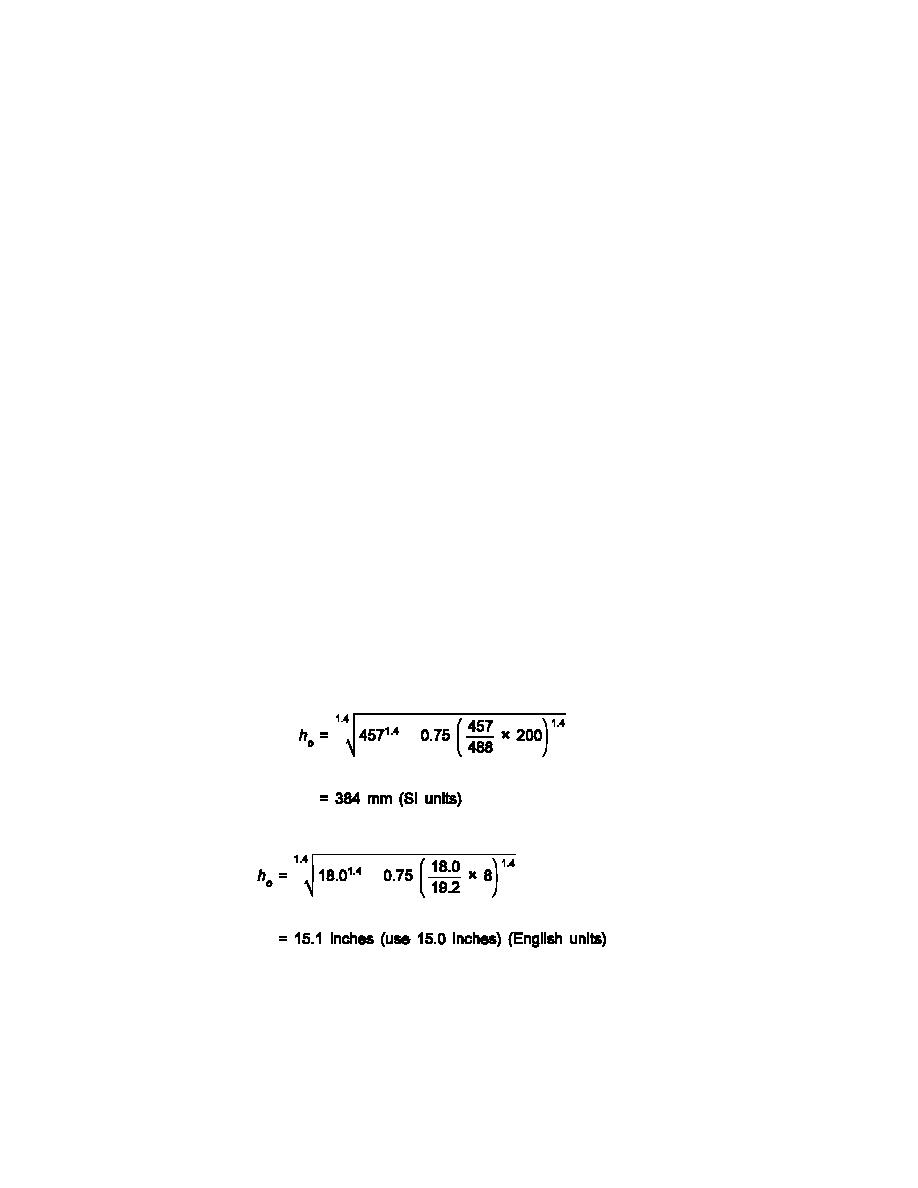
UFC 3-260-02
30 June 2001
impractical to match the joints in the overlay to joints in the existing rigid pavement, either a bond-
breaking medium will be used and the overlay designed as a nonbonded overlay, or the overlay will
be reinforced over the mismatched joints. Should the mismatch of joints become severe, a
reinforced concrete overlay design should be considered as an economic alternative to the use of
nonbonded plain concrete overlay. For nonbonded plain concrete overlays, the design and spacing
of transverse contraction joints will be in accordance with requirements for plain concrete
pavements on grade. For both partially bonded and nonbonded plain concrete overlays, the
longitudinal construction joints will be doweled using the dowel size and spacing given in
Table 12-8. Any contraction joint in the overlay that coincides with an expansion joint in the
existing rigid pavement within the prescribed limits of a type A traffic area will be doweled.
Dowels and load-transfer devices will not be used in fully bonded overlays. Joint sealing for plain
concrete overlays will conform to the requirements for plain concrete pavements on grade.
(3) Example of Plain Concrete Overlay Design. An existing plain concrete pavement will be
strengthened to serve as a type A traffic area for an Air Force medium-load pavement using a plain
concrete overlay. The pertinent physical properties of the existing rigid pavement are: hE =
200 millimeters (8 inches), R = 4.83 MPa (700 psi), and k = 27 MN/m3 (100 pci). The design
(90-day) flexural strength of the concrete for the overlay is 5.17 MPa (750 psi).
(a) The existing pavement is showing some initial cracking due to load so that the
condition factor C is 0.75. The condition of the existing pavement is such that there is no reason
concrete overlay is then determined using the partially bonded overlay equation (Equation 17-2).
The design thickness hd of plain concrete pavement, using the design flexural strength of 5.17 MPa
(750 psi) for the overlay concrete and k = 27 MN/m3 (100 pci) for the existing foundation, from
Figure 12-7 (medium-load design curve) and type A traffic area, is 457 millimeters (18.0 inches).
The design thickness he of plain concrete pavement, using the 4.82 MPa (700 psi) flexural strength
of the existing pavement, a k value of 27 MN/m3 (100 pci), and Figure 12-7 is 488 millimeters
(19.2 inches). Since the existing rigid pavement is plain concrete, hE = 200 millimeters (8 inches).
Substituting these values in Equation 17-2,
&
&
(b) The existing rigid pavement is 200 millimeters (8 inches) of reinforced concrete with
0.15 percent of reinforcing steel S and a condition factor C of 0.75. All properties of the existing
pavement and proposed plain concrete overlay are the same as above. Since the existing
pavement is reinforced concrete, it will be necessary to use a bond-breaking medium and determine
the required thickness of plain concrete overlay using the nonbonded overlay equation
17-7



 Previous Page
Previous Page
